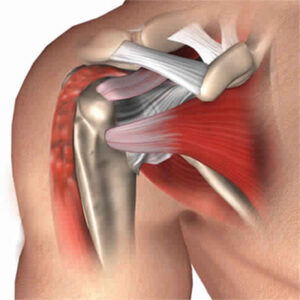Bicep Tenodesis
If you need a Bicep Tenodesis, please Schedule an appointment with one of our orthopedic specialists as soon as possible.
What Is A Bicep Tenodesis?

Bicep tenodesis is a surgical procedure aimed at addressing conditions affecting the long head of the biceps tendon, which extends from the shoulder joint to the upper arm. Surgeons perform this procedure by either reattaching the tendon in a new location or securing it within the bone to alleviate pain and restore function. This approach is particularly considered when non-surgical treatments have failed to provide sufficient relief from symptoms.
The procedure involves making a small incision near the shoulder or elbow to access the biceps tendon. Surgeons then carefully reposition or anchor the tendon to stabilize the joint and reduce pain caused by tendon inflammation or instability. This procedure aims to improve the overall stability and function of the shoulder or elbow. Additionally, bicep tenodesis aims to enhance the patient’s ability to perform daily activities and sports without discomfort or limitation.
Conditions That Necessitate Bicep Tenodesis
When non-surgical treatments fail to relieve symptoms associated with biceps tendon issues, surgeons typically consider bicep tenodesis. Common conditions that may necessitate this procedure include tears in the long head of the biceps tendon. This can, in turn, cause pain, weakness, and restricted shoulder mobility.
Furthermore, bicep tendonitis may require surgical intervention to alleviate pain and restore shoulder function. Another condition that may warrant bicep tenodesis is a Superior Labrum Anterior to Posterior (SLAP) tear. This occurs when the biceps tendon becomes partially or completely detached from the labrum. In such cases, bicep tenodesis is effective in addressing these issues and improving overall shoulder health and function. Surgeons perform this procedure by reattaching or relocating the biceps tendon to stabilize the shoulder joint and enhance patient mobility and comfort.
Bicep Tenodesis Procedure
During a bicep tenodesis procedure, the surgeon typically makes a small incision near the shoulder or upper arm. Next, the surgeon identifies and releases the torn or damaged portion of the biceps tendon from its attachment in the shoulder joint. Subsequently, the surgeon reattaches the tendon to a different location on the humerus bone using sutures, anchors, or screws. This new attachment site is usually chosen to relieve symptoms and provide stability to the shoulder joint.
Bicep Tenodesis Recovery

